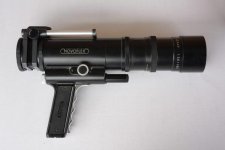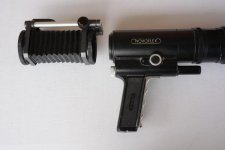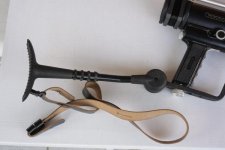M
M like Leica M6
Guest
One of the german thinktanks in the photo gear business that is always underestimated is Novoflex - their name was not on many products they developed and produced. I just copied a small part of their company history from their website, it only shows a fraction of the products they made for others - ever wondered, why Zeiss and Leitz bellows looked like Novoflex bellows? Today, most people know them for their ballheads, bellows and other accessories, in the past every nature and sports photographer had a follow-focus lens made by Novoflex. I have no idea what this manufacturer produces today for other companies. There must be many interesting things to find out about their history.
I think they deserve a more important place in the hall of fame. What do you think about it?
1997
Development of shift bellows for photography and digital photography for Rollei, Braunschweig, Germany
1987
First internal focusing Rapid Focus Lens 2.8/300 with Tamron-Optik
1986
Development and production of 60-300mm Rapid Focus Zoom Lenses with Tamron-Optik
1982
Development and production of the 200mm Rapid Focus Lens
1977
Production of automatic bellows and lens heads for Pentax with Bayonet and for Leica R 3
1972
Prism viewfinder with a exposure meter for the HASSELBLAD camera made by Hasselblad, Sweden, Flash holder X-Shoe
1970
Production of automatic bellows for Rollei, Braunschweig, Germany
1968
Automatic bellows and corresponding lens head Auto-Bellows-Novoflexar 4/105 mm for NIKON, CANON, TOPCON, PENTAX ,etc.
Automatic bellows for ICAREX made by Zeiss-Ikon
1967
Development and production of the first bellows with automatic aperture functionality for the MINOLTA SR-T 101 for Minolta Camera, Japan
1966
Development and production of special bellows, bellows lens hood and lenses for BOLEX Cinema cameras made by Paillard, Switzerland
1962
Development and production of the Macro wide angle lens 1:3.5/35mm
Development and production of the automatic 105 and 135 lens heads with a double cable release for the bellows
Development and production of a prism viewfinder for HASSELBLAD made by Hasselblad, Sweden
1960
Bellows for the ALPA camera made by Pignons AG, Switzerland
1959
Bellows for EDIXA for WIRGIN-Kamerawerke
1955
Development and production of NOVOFLEX Rapid Focus Lenses
1954
Development and production of a special bellows for CONTAX with Panflex for ZEISS-IKON
Development and production of bellows for HASSELBLAD for the 1600-F
and 1000- F camera
1950
Production: Reflex camera body and corresponding lenses for LEICA and CONTAX
Development of shift bellows for photography and digital photography for Rollei, Braunschweig, Germany
1987
First internal focusing Rapid Focus Lens 2.8/300 with Tamron-Optik
1986
Development and production of 60-300mm Rapid Focus Zoom Lenses with Tamron-Optik
1982
Development and production of the 200mm Rapid Focus Lens
1977
Production of automatic bellows and lens heads for Pentax with Bayonet and for Leica R 3
1972
Prism viewfinder with a exposure meter for the HASSELBLAD camera made by Hasselblad, Sweden, Flash holder X-Shoe
1970
Production of automatic bellows for Rollei, Braunschweig, Germany
1968
Automatic bellows and corresponding lens head Auto-Bellows-Novoflexar 4/105 mm for NIKON, CANON, TOPCON, PENTAX ,etc.
Automatic bellows for ICAREX made by Zeiss-Ikon
1967
Development and production of the first bellows with automatic aperture functionality for the MINOLTA SR-T 101 for Minolta Camera, Japan
1966
Development and production of special bellows, bellows lens hood and lenses for BOLEX Cinema cameras made by Paillard, Switzerland
1962
Development and production of the Macro wide angle lens 1:3.5/35mm
Development and production of the automatic 105 and 135 lens heads with a double cable release for the bellows
Development and production of a prism viewfinder for HASSELBLAD made by Hasselblad, Sweden
1960
Bellows for the ALPA camera made by Pignons AG, Switzerland
1959
Bellows for EDIXA for WIRGIN-Kamerawerke
1955
Development and production of NOVOFLEX Rapid Focus Lenses
1954
Development and production of a special bellows for CONTAX with Panflex for ZEISS-IKON
Development and production of bellows for HASSELBLAD for the 1600-F
and 1000- F camera
1950
Production: Reflex camera body and corresponding lenses for LEICA and CONTAX
I think they deserve a more important place in the hall of fame. What do you think about it?




